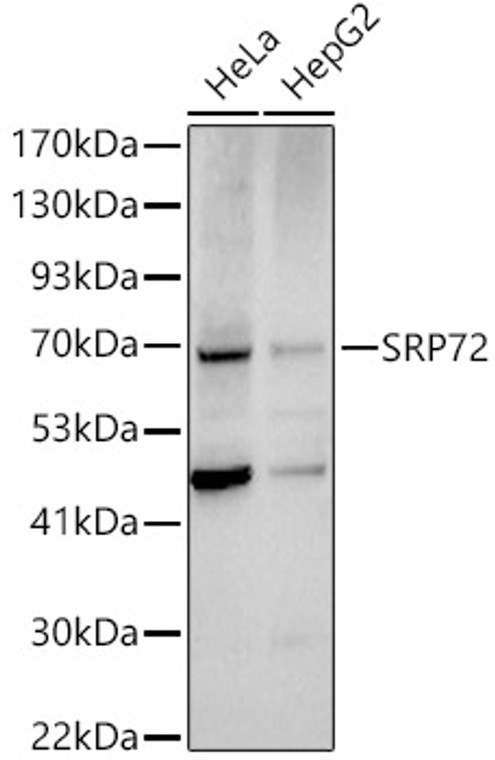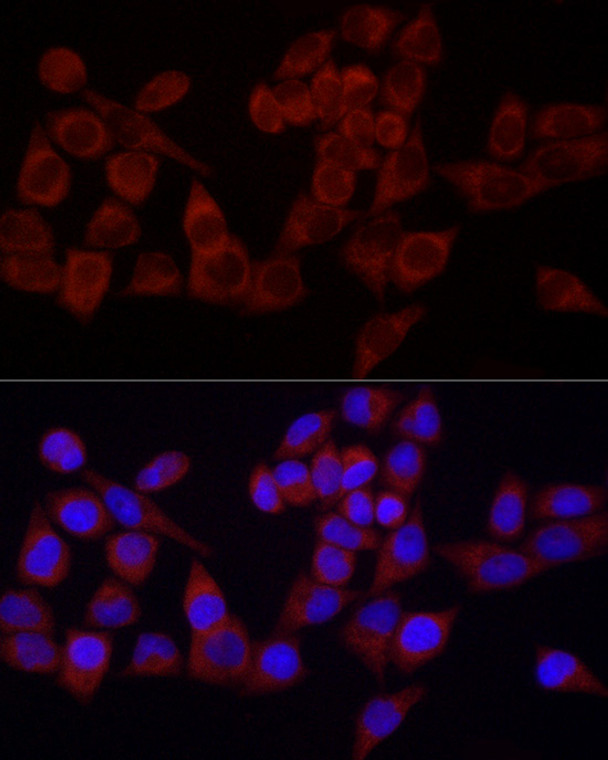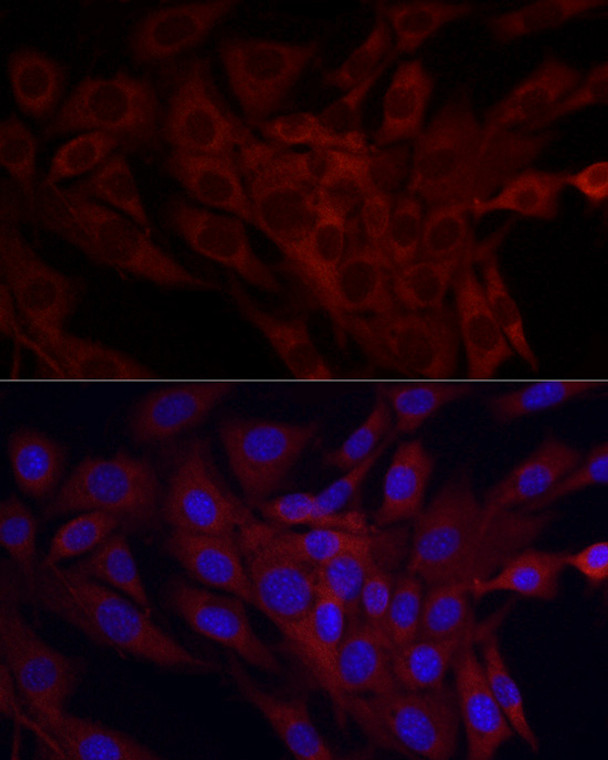| Host: |
Rabbit |
| Applications: |
WB/IHC/IF |
| Reactivity: |
Human/Mouse/Rat |
| Note: |
STRICTLY FOR FURTHER SCIENTIFIC RESEARCH USE ONLY (RUO). MUST NOT TO BE USED IN DIAGNOSTIC OR THERAPEUTIC APPLICATIONS. |
| Short Description: |
Rabbit polyclonal antibody anti-SRP72 (440-544) is suitable for use in Western Blot, Immunohistochemistry and Immunofluorescence research applications. |
| Clonality: |
Polyclonal |
| Conjugation: |
Unconjugated |
| Isotype: |
IgG |
| Formulation: |
PBS with 0.05% Proclin300, 50% Glycerol, pH7.3. |
| Purification: |
Affinity purification |
| Dilution Range: |
WB 1:500-1:1000IHC-P 1:50-1:200IF/ICC 1:50-1:200 |
| Storage Instruction: |
Store at-20°C for up to 1 year from the date of receipt, and avoid repeat freeze-thaw cycles. |
| Gene Symbol: |
SRP72 |
| Gene ID: |
6731 |
| Uniprot ID: |
SRP72_HUMAN |
| Immunogen Region: |
440-544 |
| Immunogen: |
Recombinant fusion protein containing a sequence corresponding to amino acids 440-544 of human SRP72 (NP_008878.3). |
| Immunogen Sequence: |
QPKSPAHLSLIREAANFKLK YGRKKEAISDLQQLWKQNPK DIHTLAQLISAYSLVDPEKA KALSKHLPSSDSMSLKVDVE ALENSAGATYIRKKGGKVTG DSQPK |
| Function | Component of the signal recognition particle (SRP) complex, a ribonucleoprotein complex that mediates the cotranslational targeting of secretory and membrane proteins to the endoplasmic reticulum (ER). The SRP complex interacts with the signal sequence in nascent secretory and membrane proteins and directs them to the membrane of the ER. The SRP complex targets the ribosome-nascent chain complex to the SRP receptor (SR), which is anchored in the ER, where SR compaction and GTPase rearrangement drive cotranslational protein translocation into the ER. Binds the signal recognition particle RNA (7SL RNA) in presence of SRP68. Can bind 7SL RNA with low affinity. The SRP complex possibly participates in the elongation arrest function. |
| Protein Name | Signal Recognition Particle Subunit Srp72Srp72Signal Recognition Particle 72 Kda Protein |
| Database Links | Reactome: R-HSA-1799339 |
| Cellular Localisation | CytoplasmEndoplasmic Reticulum |
| Alternative Antibody Names | Anti-Signal Recognition Particle Subunit Srp72 antibodyAnti-Srp72 antibodyAnti-Signal Recognition Particle 72 Kda Protein antibodyAnti-SRP72 antibody |
Information sourced from Uniprot.org
12 months for antibodies. 6 months for ELISA Kits. Please see website T&Cs for further guidance













